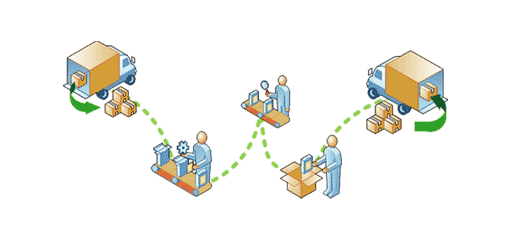
Lot traceability through retail repackaging
Food in Canada
Food Safety Packaging Processing traceabilityRepacking services can save manufacturers time and money, but present added traceabilty challenges

By Judith Kirkness
Food products don’t necessarily go directly from manufacturers to retailers. Retailers often place big orders with a manufacturer in order to put the manufacturer’s products on special. The retailer may want to send a skid to each store, but not necessarily a skid of each flavour. Retailers request that the manufacturer create an appealing full or half skid point-of-purchase (POP) display filled with a variety of the flavours of a product that they can just roll out to a centre isle to attract shoppers.
To accommodate the retailer, manufacturers often use a repacking service. These businesses receive skids of individual items to be included in the display as well as the cardboard display pieces to assemble the displays. The process of building and populating the displays with multiple products is often a people- and space-intensive activity. Workers unwrap individual cases and load the new displays with product. In order to make this an efficient process, I’ve observed that they use many people assembling many displays at the same time. Of course, this process generates waste. Some product is found to be damaged on the skid or is broken during the repack process and discarded. When the displays are complete they are wrapped and a new item skid code is assigned to this new item for shipping.
From a traceability perspective, this poses a unique challenge. The manufacturer is not in control of what lots of product are loaded onto what POP displays. There isn’t even a one-to-one relationship because of the waste factor. While the new item could be assigned a lot number, it would be challenging to link that number to the underlying lot numbers included on the combined skids. While tracking which lots find their way onto which POP displays is possible, it would definitely slow the process down. Many re-packers have handheld warehouse management systems in place but few have the capability to track the lots of product involved.
How could this challenge be solved? First, manufacturers could ship the re-packers as much of the same lot of each SKU as possible, thereby minimizing the multiple lots that could find their way into the finished displays. Additionally, they could request information back from the re-packer as to what inventory was used for an assembly job and track this information in their own records should there be a problem later. Finally, re-packers could offer this as a value-added service, to not only assemble and stock the POPs, but also to track the traceability information when creating these new SKUs.
With the goal of traceability being to be able to track from raw material through manufacturing to the retailer, we can’t ignore repackers and their role in this challenging process.
 Judith Kirkness is the author of The Traceability Factor, founder of Traceability Matters and a principal consultant at Minotaur Software. Contact her at Judith@traceabilitymatters.com
Judith Kirkness is the author of The Traceability Factor, founder of Traceability Matters and a principal consultant at Minotaur Software. Contact her at Judith@traceabilitymatters.com
Print this page